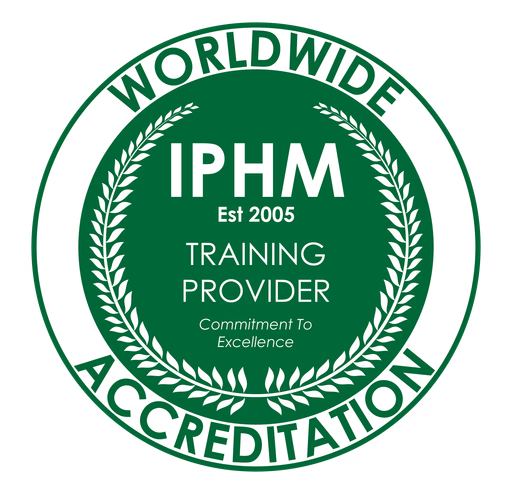
Introduction
Sound and vibration massage is more than just striking a singing bowl or pressing a vibrating tool against the skin. It’s a therapeutic practice that blends ancient traditions with modern wellness techniques. To perform it safely and effectively, proper training is essential not only for credibility but also to protect the health and well-being of clients.
Understanding Sound and Vibration Massage
Brief History and Origins
Sound healing has roots in Tibetan, Indian, and Native traditions. Singing bowls, gongs, and chanting have been used for centuries to restore balance. Vibration massage, on the other hand, emerged more recently, harnessing sound waves and mechanical tools to create deep body resonance.
Difference Between Sound Therapy and Vibration Massage
- Sound therapy uses frequencies to calm the nervous system.
- Vibration massage uses tactile vibrations on the body to loosen muscles and improve circulation.
Vibration massage is one of several massage techniques used to enhance physical therapy and recovery. Together, they create a holistic healing experience.
How Sound Frequencies Affect the Body
Every cell in our body vibrates. When exposed to healing frequencies, the body can “re-tune” itself, like adjusting an instrument that has gone off-key.
These vibrations can have significant neurological effects, as specific vibration frequencies influence the nervous system, promoting either relaxation or stimulation depending on the frequency used.
Benefits of Sound and Vibration Massage
- Stress reduction – calms the nervous system.
- Pain management – eases tension and supports muscle recovery.
- Emotional balance – releases stored trauma and anxiety.
- Energy flow – harmonizes chakras and enhances vitality.
Vibration massage offers many benefits, including pain relief, deep relaxation, and may help reduce blood pressure, supporting overall health and wellness.
Scientific Foundation of Vibration Massage
Vibration massage, or vibrational therapy, is grounded in scientific research that explores how vibrations interact with the body’s systems. When vibrations are applied to the body, the nervous system responds by transmitting signals that can help relieve muscular tension and support muscle recovery. This stimulation encourages the release of endorphins, the body’s natural pain relievers, which can reduce pain and promote a sense of well-being.
One of the key physiological effects of vibration therapy is its ability to boost blood flow and improve circulation. Enhanced blood circulation helps deliver oxygen and nutrients to soft tissues, accelerating the healing process and reducing inflammation. Studies have shown that vibration massage can be particularly effective in addressing delayed onset muscle soreness (DOMS), a common issue after intense exercise, by helping muscles recover more quickly and improving range of motion.
In clinical settings, vibration therapy has been used to support rehabilitation, manage chronic pain, and enhance overall muscle function. By targeting specific muscle groups, practitioners can use vibration techniques to decrease stress, reduce muscle soreness, and facilitate the body’s natural healing mechanisms. This scientific foundation makes vibration massage a valuable tool in both wellness and therapeutic environments.
Core Training Requirements
To practice safely, you’ll need:
- Anatomy and physiology basics – knowing muscles, nerves, and energy lines.
- Sound frequency knowledge – how tones affect brainwaves.
- Energy healing awareness – understanding chakras, meridians, or biofields.
- Clinical application understanding – knowing how to safely and effectively use vibration massage in therapeutic settings for pain relief, tissue extensibility, and muscle activation.
Types of Training Programs Available
Short Certification Courses
Beginner-friendly, lasting a few days or weeks. Perfect for yoga teachers, massage therapists, or anyone adding a new modality.
Advanced Practitioner Programs
In-depth training that covers theory, practice, and supervised sessions. Often takes several months.
Online vs In-Person Training
- Online: flexible but less hands-on.
- In-person: provides direct feedback and instrument practice.
International Standards and Accreditation
Some schools follow standards recognized by holistic associations worldwide. This adds credibility and allows practitioners to work in spas, clinics, and retreats.
Essential Skills for Practitioners
- Active listening – sensing both sound and client response.
- Instrument mastery – bowls, forks, gongs.
- Creating safe spaces – atmosphere, intention, and respect.
- Intuition – reading subtle energy shifts.
- Mastering light pressure – applying gentle, minimal force during vibration massage to promote relaxation, improve circulation, reduce muscle tension, and support quicker recovery.
Instruments and Tools Training
Tibetan & Crystal Singing Bowls
Used on or near the body to produce harmonic resonance.
Gongs and Drums
Ideal for deep energy release.
Tuning Forks
Applied directly to energy points for targeted healing.
Modern Devices
Electronic vibration tools offer precision and accessibility. Modern devices can deliver localised vibration to specific muscle groups, allowing for targeted therapeutic effects.
Hands-On Practice and Supervised Sessions
Theoretical knowledge is not enough practice is critical. Most quality programs include:
- Dozens of practice hours.
- Supervised case studies.
- Feedback from experienced mentors.
Some advanced training programs may also incorporate research components, where a control group is used to compare the effects of vibration massage interventions, helping students understand the specific impact of these treatments.
Practical Application of Vibration Massage
In practice, vibration massage is delivered using specialized tools such as massage guns and vibrating massagers, which allow practitioners to apply targeted vibrations to specific areas of the body. Massage therapists and professional athletes frequently incorporate these devices into their routines to enhance performance, reduce pain, and speed up recovery after intense activity.
The technique typically involves starting with gentle pressure and gradually increasing the intensity of the vibrations, allowing the body to adapt and respond without discomfort. By adjusting the frequency and amplitude, practitioners can tailor the treatment to address muscle soreness, tight muscles, or specific issues like plantar fasciitis. Research published in the British Journal of Sports Medicine and the Journal of Sports Physical Therapy supports the effectiveness of vibration massage in improving range of motion and reducing pain in both athletes and individuals with chronic conditions.
Safety is a key consideration in the practical application of vibration massage. It’s important to avoid applying too much pressure, as excessive force can lead to adverse effects or discomfort. Instead, practitioners focus on using light, controlled movements to target muscle fibres, trigger points, and areas of muscular tension. This approach not only helps reduce pain and muscle knots but also supports the body’s natural healing process, making vibration massage a versatile and effective therapy for a wide range of clients.
Ethics and Client Care
Sound and vibration massage may look simple, but client safety comes first:
- Know contraindications (e.g., pregnancy, epilepsy, heart conditions).
- Be cautious when working with clients who have scar tissue; special techniques may be required to safely address and mobilize scar tissue.
- Maintain confidentiality.
- Set clear professional boundaries.
Certification and Licensing
Requirements differ by country:
- Some regions allow open practice with certification.
- Others require a massage therapy license.
- Practitioners often carry liability insurance.
Complementary Training
Many practitioners combine sound and vibration massage with:
- Yoga and breathwork.
- Meditation and mindfulness.
- Reiki or energy healing.
Some also incorporate whole body vibration platforms as a complementary modality, using them alongside sound and vibration massage to enhance the overall session.
This makes sessions more holistic and impactful.
Continuing Education and Mastery
Learning doesn’t stop after certification. Advanced practitioners often attend:
- Sound healing retreats.
- International workshops.
- Ongoing scientific research discussions.
They also stay updated by reading scientific journals such as Br J Sports Med to keep abreast of the latest research in vibration massage.
Challenges in Training and Practice
- Some people dismiss sound healing as “woo-woo.”
- Balancing intuition with structured techniques can be tricky.
- Knowing when to apply more pressure versus using gentle techniques in vibration massage is a challenge, as improper pressure can cause discomfort or adverse effects.
- Building trust takes time and consistency.
Career Opportunities
Once trained, practitioners can work in:
- Private wellness studios.
- Spas and resorts.
- Retreats and workshops.
- Online healing sessions.
- Sports med clinics, collaborating with athletes and rehabilitation teams to support recovery and mobility.
Conclusion
Sound and vibration massage requires more than just enthusiasm it demands structured training, hands-on practice, and a deep respect for the client’s well-being. With the right education, practitioners can create powerful healing experiences that relax the body, clear the mind, and restore balance to life.
FAQs
Not always, but understanding anatomy is highly recommended.
Music therapy uses structured music in clinical settings, while sound healing focuses on frequencies and vibration for holistic wellness.




